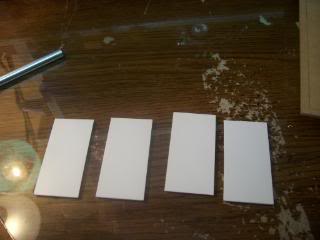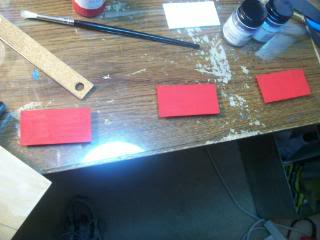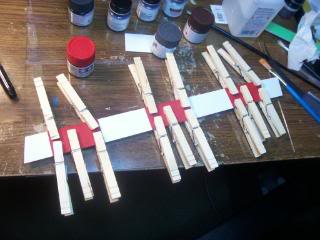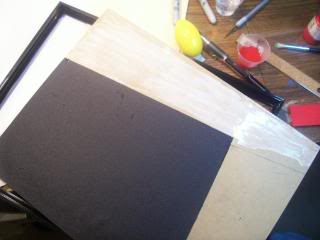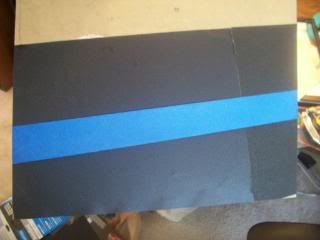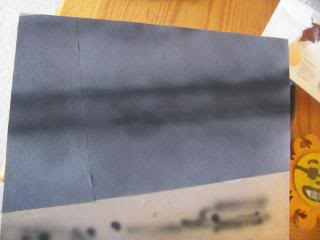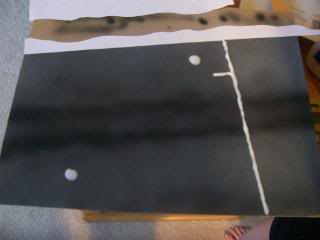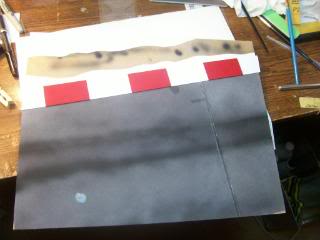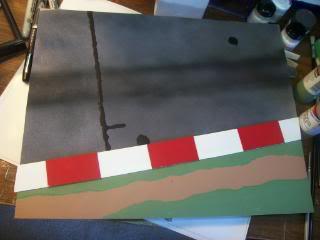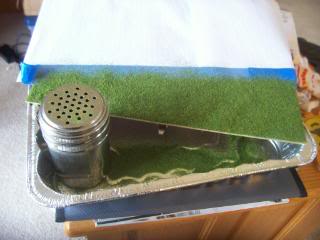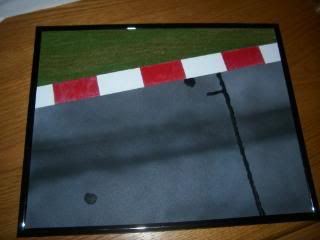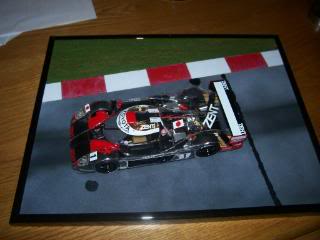I want a display base to show off different car models, depending on my mood. So I came up 3 different scenes. This is the easiest, and so will be my first. I'm using it as a test bed for skills I haven't tried before. The scene will be the edge of a race track, the road surface and a little of the infield. I spent some time looking at a lot of pics from different race track borders. The good news was, there is so much variation in tile size, design, angle and colors, for the track edge that you really can't go wrong.
So the first thing I picked up was some picture frames at the carft store. Two for seven dollars. They are 11 inches by 14 inches. This way the model will take up space on the display but not be crowded. I decided just to use the frame backing as the base because it was really stiff.

It seemed to me a lot of the track borders are as deep as a wheel and rim are tall. So I cut out a strip of plastic from a sheet of .75mm styrene after measuring the height of a model's wheel. Some of the tiles I looked at were really thick while others were flush with the road surface. Once again leaving it up to you, how you want it to look. I wanted the border at an angle so it was interesting to look at.
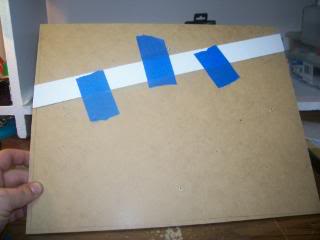
The strip was to short to go all the way across the scene, so I had to glue two pieces together. I wasn't to concerned with the seam as we will hide it later. I did make sure to put it near one end though, instead of the middle.

So the first thing I picked up was some picture frames at the carft store. Two for seven dollars. They are 11 inches by 14 inches. This way the model will take up space on the display but not be crowded. I decided just to use the frame backing as the base because it was really stiff.

It seemed to me a lot of the track borders are as deep as a wheel and rim are tall. So I cut out a strip of plastic from a sheet of .75mm styrene after measuring the height of a model's wheel. Some of the tiles I looked at were really thick while others were flush with the road surface. Once again leaving it up to you, how you want it to look. I wanted the border at an angle so it was interesting to look at.

The strip was to short to go all the way across the scene, so I had to glue two pieces together. I wasn't to concerned with the seam as we will hide it later. I did make sure to put it near one end though, instead of the middle.


